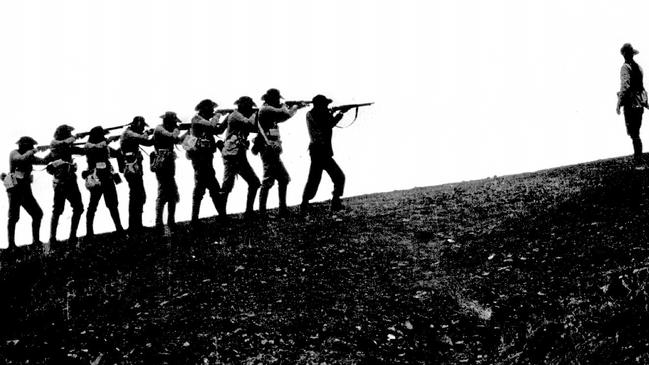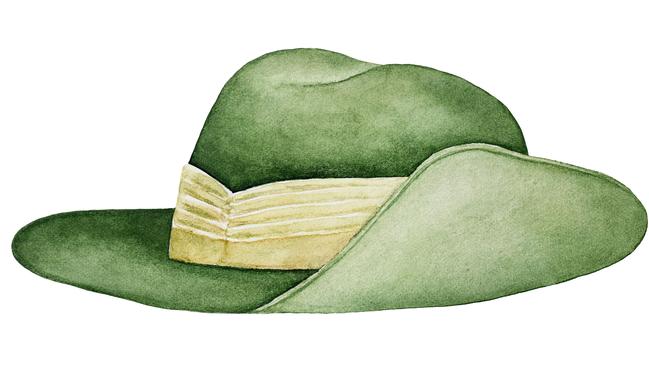Trooper Presgrave worth honouring
It’s time Australia started looking for someone more honourable to better commemorate a war that should never have been fought.

The best-known Australian to serve in the Boer War executed unarmed prisoners of war and used a defence later favoured by Nazi war criminals, that he was following orders.
Yes, Harry “Breaker” Harbord Morant was treated unfairly, but that doesn’t make him right. One hundred and twenty years on from the start of what’s known in South Africa as the Second Anglo-Boer War, it’s time Australia started looking for someone more honourable to better commemorate a war that should never have been fought.
Submitted for consideration: Trooper Edward Lionel Presgrave, clerk, aged 20 when he arrived in Cape Town in 1900 from his home in Hurstville in Sydney, and, like Morant, also executed.
About 16,000 Australians, including more than 80 female nurses, served in the war against the Boers, the Afrikaans word for farmers. Before Australia became a Federation in 1901, the first contingents to be sent were raised by the six colonies (later states) and drew heavily from the existing militia forces.
However, Presgrave, like many other ordinary Australians, didn’t bother trying to enlist in a local unit and instead hopped the first ship to Cape Town, where he was recruited by a locally raised British unit, Brabant’s Horse.
Other Australians already living in South Africa at war’s outbreak, mostly goldminers, also joined local British units. Interestingly, a handful of Australians joined a host of foreign volunteers — including Irish, Americans and Germans — with an axe to grind against Britain and signed up on the Boer side.
Mining money was a root cause of the conflict. Britain had taken control of the Cape Colony in the early 19th century and the Boers, descendants of the original Dutch settlers, trekked northwards into Africa to carve out new homelands in the Orange Free State, the Transvaal and Natal.

Uneasy with the expansion, Britain annexed Natal and the Transvaal, sparking the First Anglo-Boer War, of 1880-81. With their noses bloodied, the British relinquished Transvaal but kept Natal. When gold and diamonds were discovered, Britain took a renewed interest in the newly proclaimed South African Republic.
Moves by the republic’s president, Paul Kruger, to deny the vote to non-South African-born men angered the many foreign miners in the Transvaal and gave Britain the spark it needed to ignite a war.
The conflict was marked by early disasters for the British. Lightly armed but highly mobile, the Afrikaner farmers lured slow-moving columns of British infantry into attacks on granite koppies (hills), making the most of their local knowledge. The Boers ran rings around the British.
While the Australian colonial militias arrived too late to be tarred by these early defeats, by May 1900 they were present in numbers large enough to contribute to the relief of Mafeking, a much-heralded and needed British victory. Although the Australians were not a big force they punched above their weight. Six Australians won the Victoria Cross between 1899 and 1902, two more than the total won in 13 years of combat in Afghanistan.
Another wave of reinforcements brought a new breed of soldier, the imperial bushman. These mounted riflemen, from Australia, New Zealand and Canada, were tough, often unruly types who knew how to shoot and how to ride.
With Kruger ousted from power and fled from the country, the Boers dispersed on to the open veld in small commando units during the final guerrilla phase of the war. The British commander, Lord Kitchener, now had colonials who could fight the Afrikaners on their own terms, and a new “scorched earth” strategy aimed at depriving the enemy of support. Boer farms were burned, livestock slaughtered and the guerrillas’ families interned in concentration camps.
Australians did their duty, sometimes reluctantly, as a letter from Private Alan Wellington to his friend Philip highlights: “We take the women and children out of the houses and burn the farms in their faces. I had a horrible experience one day, I had to go in a house and carry an old lady that couldn’t walk out and help to put her in a wagon, she cried like a child. It was hard for me to have to do it, but Phil it was my duty, I had to do it.”
While the camps were not designed to exterminate, typhoid, dysentery, measles and poor sanitation and nutrition claimed the lives of about 28,000 people, 22,000 of them children.
So what of Presgrave, of Hurstville, Sydney?
With Brabant’s Horse, Presgrave saw action in the Cape Colony and the Transvaal.
Discharged honourably, he joined a second unit, Tullibardine’s Scottish Horse, and faced 3000 Boers entrenched in the Magaliesberg Mountains. We don’t know how he felt about the Boers but we do know he stayed on in South Africa after the war’s end.
Presgrave drifted north to the frontier town of Upington and the Kalahari Desert, where he made a living on the edge of the law (if we are to consider him as a rival to Morant he needs a touch of the rogue) selling horses and arms to the Nama people of neighbouring German South West Africa, now Namibia.
The Nama and Herero people had risen up against their colonial masters in 1904 over unfair policies that had cost them their lands and cattle during a protracted drought. The Nama needed horses and there was a glut of mounts left in South Africa at the end of the Boer War.
At some point Presgrave stopped being a trader and joined forces with a charismatic guerrilla leader, Kaptein Jakob Morengo. Fluent in six languages, educated in Germany and the first leader of his people to allow women to speak at tribal council meetings, Morengo was also a tactical genius.
The “Black Napoleon”, as the Germans called him, and his Australian sidekick adopted the tactics Presgrave had learned from the Boer commandos, and this unlikely pair led the Germans on a deadly dance through the remote Karas Mountains of southern Namibia.
Both men had bounties on their heads and a couple of former Boers spying for the Germans lured Presgrave, then 24, into a dodgy cattle deal in the desert. They shot him in the stomach and left him to die a slow death. When the Boers went to claim their reward the German commander sent out a patrol, with a military doctor, to check on Presgrave. They found him, miraculously still alive after 24 hours in the desert.
Instead of administering first aid, they executed him on the spot.
Attempts by Presgrave’s parents in Sydney to learn what had happened to their son were blocked at every turn. Neither the British nor the German government or the fledgling Australian parliament wanted to provoke an international incident and the matter was consigned to the vaults of history.
The Black Napoleon met a similarly unfair end, cornered by a joint British and German patrol and gunned down. The British were officially neutral during Germany’s war but did not want an upstart tribesman fomenting rebellion one day on their side of the border.
The Germans borrowed Kitchener’s concentration camp strategy and took it to a gruesome new level: tens of thousands of Nama and Herero men, women and children were starved and worked to death.
Who, then, should we remember on this anniversary — a man who executed unarmed prisoners or one who not only did his difficult duty but also gave his life in a fight for freedom that history has judged, unlike the Second Anglo-Boer War, to be a noble cause?
Tony Park’s 17th African thriller novel, Ghosts of the Past (Macmillan Australia), is based on the true story of Edward Lionel Presgrave.



To join the conversation, please log in. Don't have an account? Register
Join the conversation, you are commenting as Logout